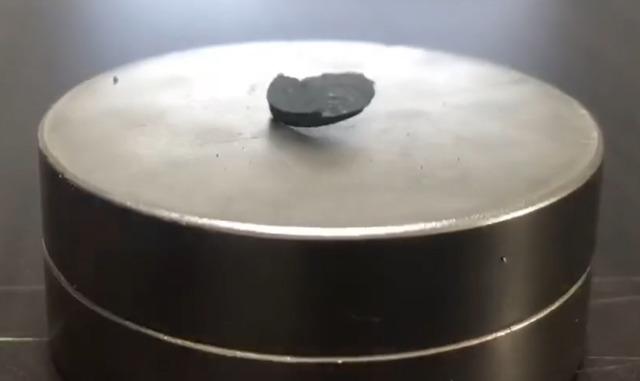There is an agenda that cannot be missed by the watchful eyes at the moment in social media and also in the world of science. Yes, we are talking about the LK-99. This material is claimed to be the world’s first superconductor to operate at room temperature and pressure.
THEY ARE APPROACHING WITH DOUBT
But experts he spoke with are skeptical, however much they want to see such a superconductor, which can conduct electricity with zero resistance at room temperature and ambient pressure, succeed, according to The Verge.
To be sure, more precise answers are still awaited from anyone trying to confirm the claims about the LK-99.
If true, the LK-99 is said to be revolutionary.
Source of the photos: (ScienceCast / Hyun-Tak Kim)
WHAT IS LK-99?
Technically, LK-99 is a polycrystalline material made of lead, oxygen and phosphorus and infused with copper.
A group of researchers published a series of papers on the discovery of LK-99 in late July, calling it “a brand new historical event that opened a new era for humanity.”
Articles involving scientists from the Quantum Energy Research Center in South Korea claim that LK-99 is the world’s first superconductor that works at room temperature and pressure.
In other words, they claim to be able to conduct electricity without any resistance in a typical environment.
Today, electrical grids and electronic devices waste tons of electricity due to resistance in less efficient materials.
THE IMPORTANCE OF THE LK-99
There are other superconductors available today. They are used in magnetic resonance imaging (MRI) machines, quantum computers, and nuclear fusion devices. But these superconductors only work at very low temperatures or high pressures. This makes them very difficult and expensive to use in most everyday applications.
From this, it is possible to deduce that if the claim that LK-99 is the world’s first superconductor operating at room temperature and pressure is confirmed, it can facilitate the use of superconductors.
WHY IS THE SCIENTIFIC SCIENCE APPROACHING WITH SUSPECT? HERE ARE EXPERTS’ CONCERNS ABOUT THE LK-99
LK-99 gained notoriety after being described in preprints, i.e. non-peer-reviewed research articles.
Two preprints were published in late July, and a related study was published in the “Journal of the Korean Crystal Growth and Crystal Technology” earlier this year.
Experts, on the other hand, expressed a number of concerns in interviews.
First, there are said to be inconsistencies in the data and the two preprints do not match.
Allegedly, there is also disagreement among the authors. Three authors are mentioned in one article and six in the other. An author of the other article told New Scientist that the preprint with fewer authors contained “many flaws.”
Hyun-Tak Kim, a William & Mary physics research professor, suggested that the preprint was uploaded to arXiv without his permission.
“IF THERE IS NO SPECIFIC THERMAL ANOMALY, IT IS NOT A SUPERCONDUCTOR”
Oxford University expert Chris Grovenor points out that the researchers did not perform a heat anomaly test that is standard for large laboratories studying such materials.
“All superconductors that have been proven to be superconductors so far show this specific heat anomaly. If there is no specific heat anomaly, it’s not a superconductor,” Grovenor said.
Prestresses aren’t precise in the definition of “zero” resistance, either, according to Nadya Mason, a physicist at the University of Illinois Urbana-Champaign.
WAS THE “SUPER CONDUCTOR AT ROOM TEMPERATURE” CONSIDERABLE BEFORE LK-99?
In 2020, a research team from the University of Rochester said they had found a room-temperature superconductor made of hydrogen, sulfur and carbon. However, the research, published in the world-renowned journal Nature, was withdrawn after it pointed to problems with how the data was processed.
The Rochester researchers tried again and in March published another paper on a room-temperature superconductor made from nitrogen, hydrogen and the rare earth metal lutetium. This article is still under scrutiny as a key Rochester researcher faces allegations of plagiarism and data fabrication in her other work.
‘LK-99’ MADNESS ON SOCIAL MEDIA
It’s not just the big research labs that are working to see if the LK-99 is successful. Because the LK-99 is made from relatively simple materials and doesn’t require extreme temperatures or pressures, many other people with access to it and the right equipment are also experimenting.
An engineer working on a space exploration initiative is live-streaming his work on Twitch, Wired reports.
On the other hand, a video of a LK-99 piece made by a research team from Huazhong University of Science and Technology is circulating on the Internet.
???? BREAKING – first repro video of LK-99 spec floating? https://t.co/IlxI5ACFTQ
Source here: https://t.co/duVT1tJ4WS
— Alex Volkov – targum.video – I WANT TO BELIEVE (@altryne) August 1, 2023
At the same time, there are many posts about the LK-99 on social media.
Meissner effect or bust: Day 8.5
We made the rocks pic.twitter.com/ygVOATBaHD
— Andrew McCalip (@andrewmccalip) August 4, 2023
DON’T HAVE A FORECAST
Experts say that it is too early to make a final decision about the LK-99.
Also, none of The Verge’s experts can predict when we might see revolutionary room-temperature superconductors in action.
